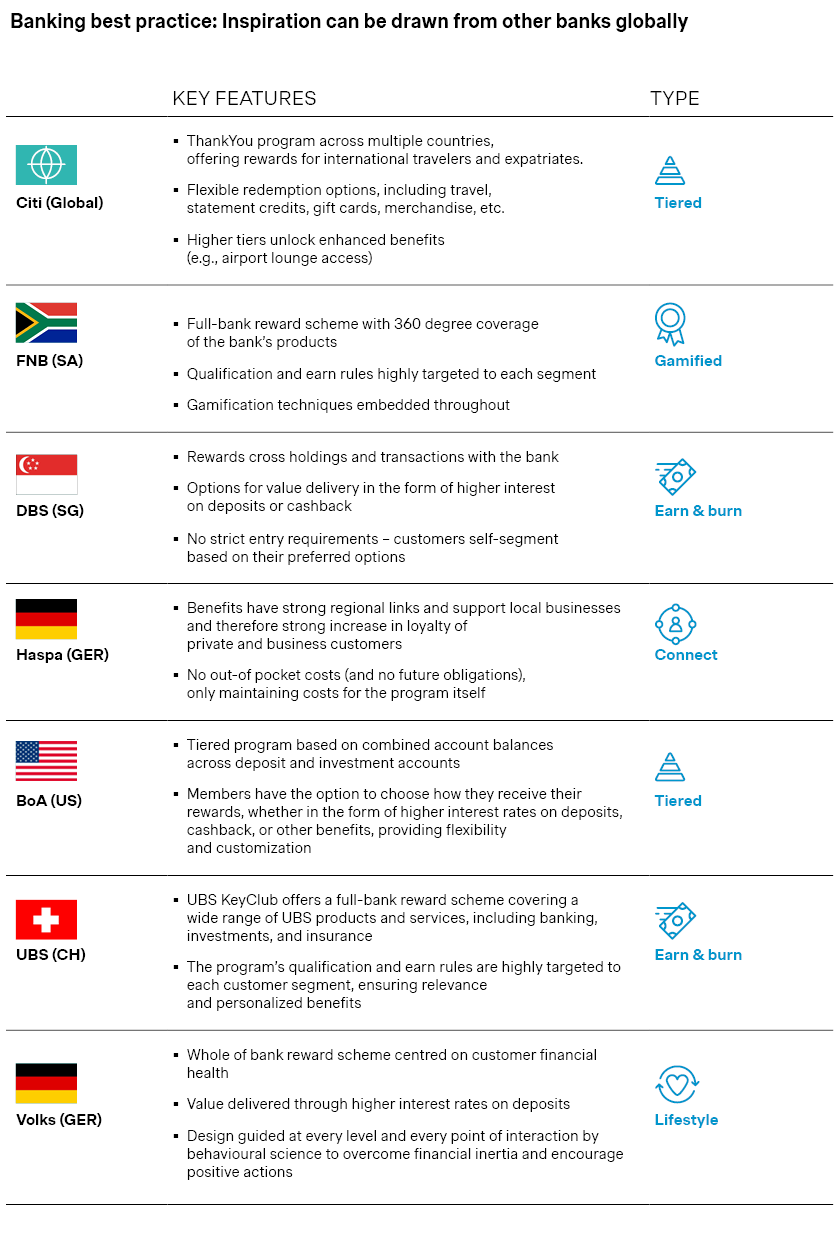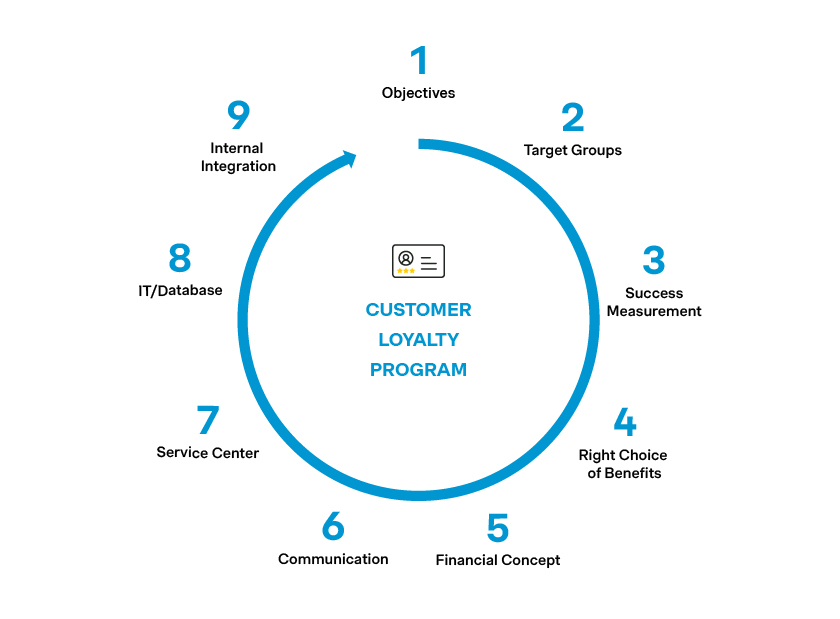Explore the critical role of customer engagement and loyalty programs in fostering long-term customer relationships and achieving key business objectives. Our latest blog outlines the fundamental principles for successful program design, analyzes best practices across the industry, and highlights the benefits for Australian banks.
Customer engagement and loyalty programs are crucial in the current banking landscape to cultivate long-term relationships and distinguish banks from their competitors.
Current banking challenges and shifts in customer expectations
Historically, banks have been focused on acquiring new customers rather than incentivizing loyalty among existing ones. However, the post-Covid era, marked by higher inflation and interest rates, has shifted customer expectations, prompting them to seek greater value from their financial institutions.
The rapid pace of the Reserve Bank of Australia cash rate increases, rising 425 basis points from May 2022 to November 2023, has compelled customers to explore alternatives and demand more competitive offerings from their banks. The cost-of-living crisis has compounded this effect as many consumers look to optimize their finances out of necessity. Adding to the pressure, the entry of non-traditional players such as Neo-banks, FinTech, and Big Tech has intensified competition, compelling banks to reimagine their loyalty strategies.
Globally, the banking industry faces retention rates of approximately 75 percent, implying a loss of 25 percent of customers annually. Australian banks have traditionally struggled to deploy effective loyalty programs, often resorting to price-based retention strategies that come at a significant cost and may not ensure long-term loyalty. Investments in customer experience improvements and new features have yielded limited results in terms of retention due to the relatively shallow relationships many customers have with their banks, often based on a limited scope of needs-based interactions.
Furthermore, there has been increased awareness and concern about ‘loyalty tax’, where long-term customers are penalized with higher prices than those offered to new customers. Bank’s loyalty programs haven't always been successful in driving customer engagement, lacking focus on incentivizing valuable customer behaviors and missed opportunities to nurture holistic, long-term loyalty through deeper customer relationships.
Successful loyalty programs adhere to several key principles
These programs present an opportunity for banks to innovate, enhance customer retention, and drive sustained growth. So, what does it take to create a highly effective loyalty program?
- Simplicity: Ensure a clear and easy-to-follow program where both new and existing customers understand how it operates, how they earn and redeem rewards, their balance, and if or when rewards expire.
- Segmentation: Tailor rewards and engagement strategies to different customer segments based on demographics and financial needs. A "one-size-fits-all" approach is less effective in driving long-term customer engagement.
- Holistic bank approach: Successful programs leverage the entire bank's offerings, moving beyond individual product silos, encouraging cross-sell to other products.
- Data-driven personalization: Leverage customer data and analytics to personalize offers and rewards, creating a more meaningful and engaging experience.
- Valuable rewards: Offer rewards that align with target customer preferences. Cashback and points can be effective, but consider unique incentives like experiences, travel benefits, or exclusive deals with partner merchants. Strategies to trigger further engagement upon redemption should also be considered.
- Behavior-driven rewards: Design the program to incentivize desired behaviors that align with your strategic objectives. Activate engagement by encouraging customers to explore new features, increase product usage, and maintain growing account balances to drive stickiness in the mid-to-long term.
- Innovative operationalizing: Utilize digital channels to implement the rewards and incorporate interactive gamification elements like progress bars, badges, or challenges to boost customer engagement and make participation more enjoyable.
- Partnerships and collaboration: Explore innovative ways to deliver rewards, such as integrating with loyalty marketplaces or collaborating with relevant partners to offer white-labeled products and services.
Exploring the dynamics of effective customer engagement and loyalty programs
Global insights into banking customer loyalty
Several banks around the world have implemented successful loyalty programs that showcase valuable insights.
- Customer segmentation is vital to effectiveness. A one-size fits all approach will be much less effective.
- A whole-of-bank approach is critical for maximizing effectiveness and impact.
- Gamification techniques, when carefully calibrated, can drive engagement.
- Operationalizing value delivery through rewards enables sophisticated pricing to be delivered outside the core.
- Market leading interest rates can be advertised, albeit subject to qualifying criteria linked to depth of bank relationship.
- A whole-of-customer approach is essential for promoting and maintaining holistic financial health.
- Embedding behavioral science in program design can considerably enhance effectiveness in driving consumer behavior.
- Smart recommendations utilizing AI and customer data, including product holdings and transactional behavior, can boost customer engagement and satisfaction.

Popular banking loyalty programs in Australia
Loyalty programs vary in goals, structures, and mechanisms for earning and spending rewards. Here are some key programs used for engaging and rewarding customer loyalty in banking:
- Earn and burn programs: This classic rewards system allows customers to earn points for purchases and redeem them for rewards. Examples: Woolworths, Coles
- Tiered loyalty programs: Customers are motivated to unlock better perks as they spend more or engage further. Examples: Bergzeit, Qantas
- Gamified loyalty programs: These programs effectively engage customers through fun, interactive challenges and badges, boosting overall engagement. Examples: Starbucks, KFC Rewards
- Loyalty communities: Exclusive groups based on shared interests foster deeper connections among members. Examples: Sephora, Planet Brewing
- Lifestyle loyalty programs: These personalized programs encourage and reward customers for healthy habits or eco-friendly choices. Examples: Rip Curl, Priceline Sister
- Paid loyalty programs: Customers are enticed by premium benefits for a recurring fee, which strengthen existing relationships and attract new ones. Examples: Coffee Club, Amazon Prime
Each program type uses different operational mechanisms, such as points, punch cards, badges, and cashbacks, catering to diverse customer preferences and business goals.
What are the benefits of loyalty programs?
Effective loyalty programs help banks achieve various corporate objectives, with benefits including:
- Increased customer acquisition: They differentiate offerings from competitors and attract new customers through attractive loyalty programs.
- Improved retention: They reduce customer churn and preserve market share by fostering emotional investment and active engagement through positive experiences and progress within the program.
- Higher customer lifetime value: They encourage deeper engagement and usage and promote cross-selling opportunities, increasing revenue per customer.
- Enhanced customer experience: They offer personalization and relevant rewards which contribute to a more satisfying customer journey.
- Data-driven insights: They provide valuable data on customer needs, preferences, and behaviors for refining marketing and sales strategies and developing value-added products and services.
- Improved brand recognition: They can strengthen brand loyalty and positive customer perception.
Strategies for implementing effective banking loyalty programs in Australia
Banks need to carefully account for different considerations, such as goals and objectives, program construct, engagement strategy, and financial impact, when setting up new loyalty programs.
The first step is to define desired outcomes clearly to structure program features rewards accordingly. Successful banking loyalty programs require customized earning mechanisms, reward tiers, and redemption options for targeted customer segments.
Developing a comprehensive engagement plan is equally important. With this strategy, banks can drive customer participation and maximize program adoption across all segments. Banks also need to assess the potential financial impact of the program, analyzing different scenarios of customer uptake, behavior change, and benefits redemption.
Development of customer loyalty programs must systematically address the following elements

Tracking key metrics is crucial for measuring the effectiveness of loyalty programs. Many banks rely on key metrics such as acquisition and churn, Net Promoter Scores, program participation rates, customer acquisition cost, and customer lifetime value. Regularly analyzing data and adapting program features based on customer behavior and performance indicators will help to ensure program success.
As customers reassess their banking arrangements, loyalty programs provide banks with a unique opportunity to deepen engagement and reward customers for their holistic relationship across the bank. By aligning loyalty programs with customer needs, offering valuable rewards, leveraging data and analytics for personalization, and fostering increased engagement, banks can build lasting relationships, drive loyalty, and achieve sustainable growth in today's dynamic banking environment.
For more information, contact us today.
APAC Insights
Stay informed on the latest market trends and industry insights from the APAC region
Form placeholder. This will only show within the editor








